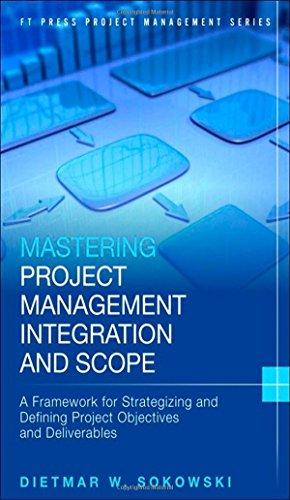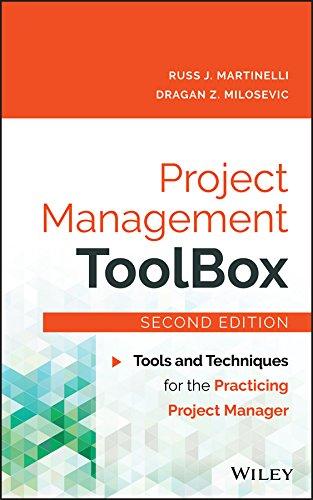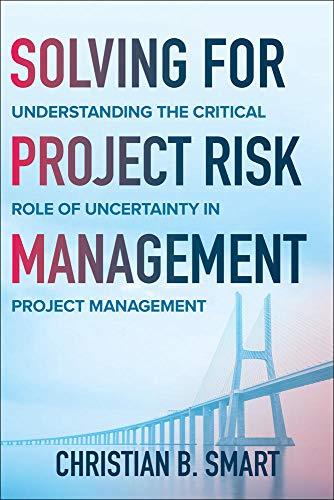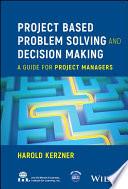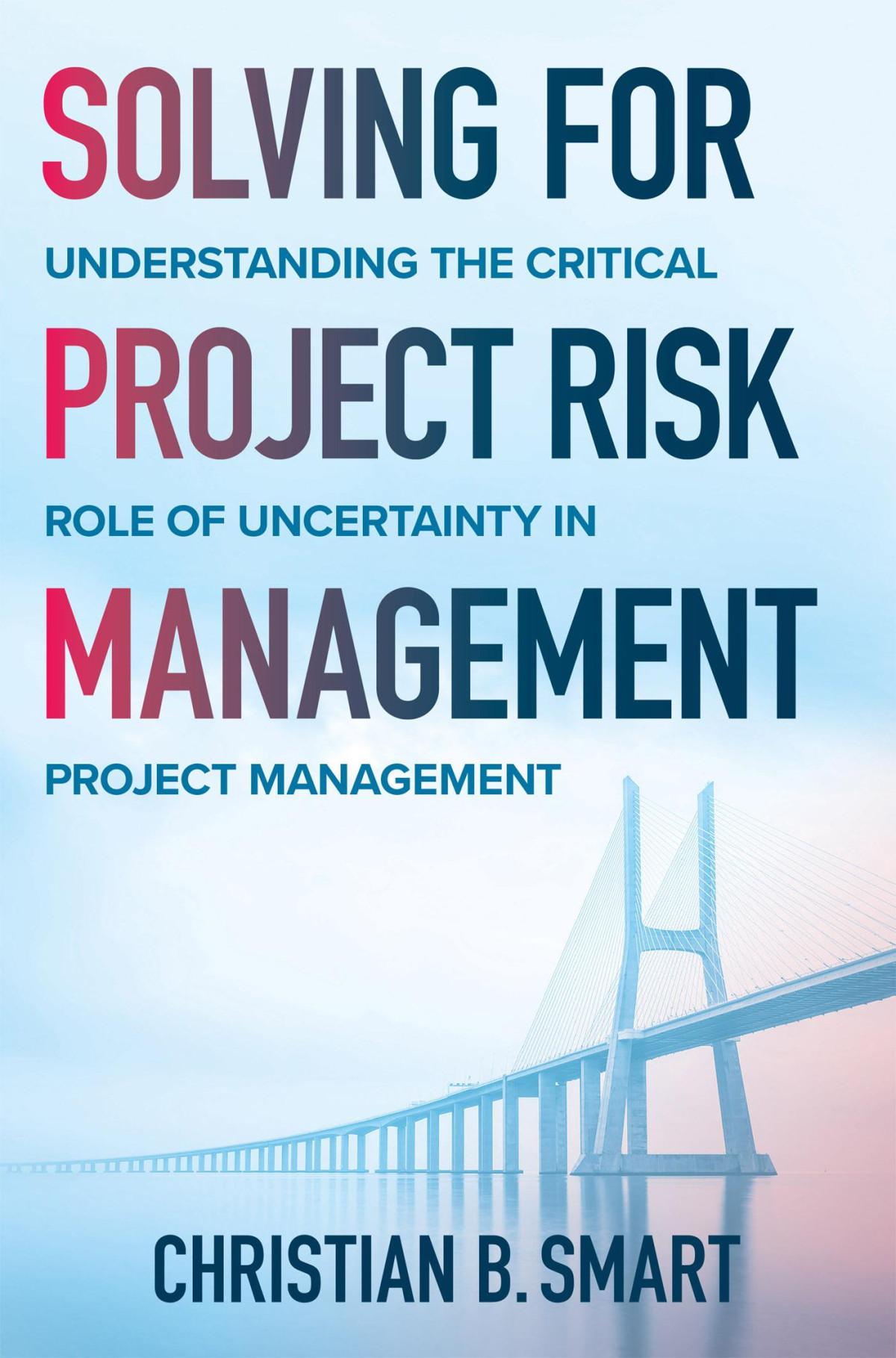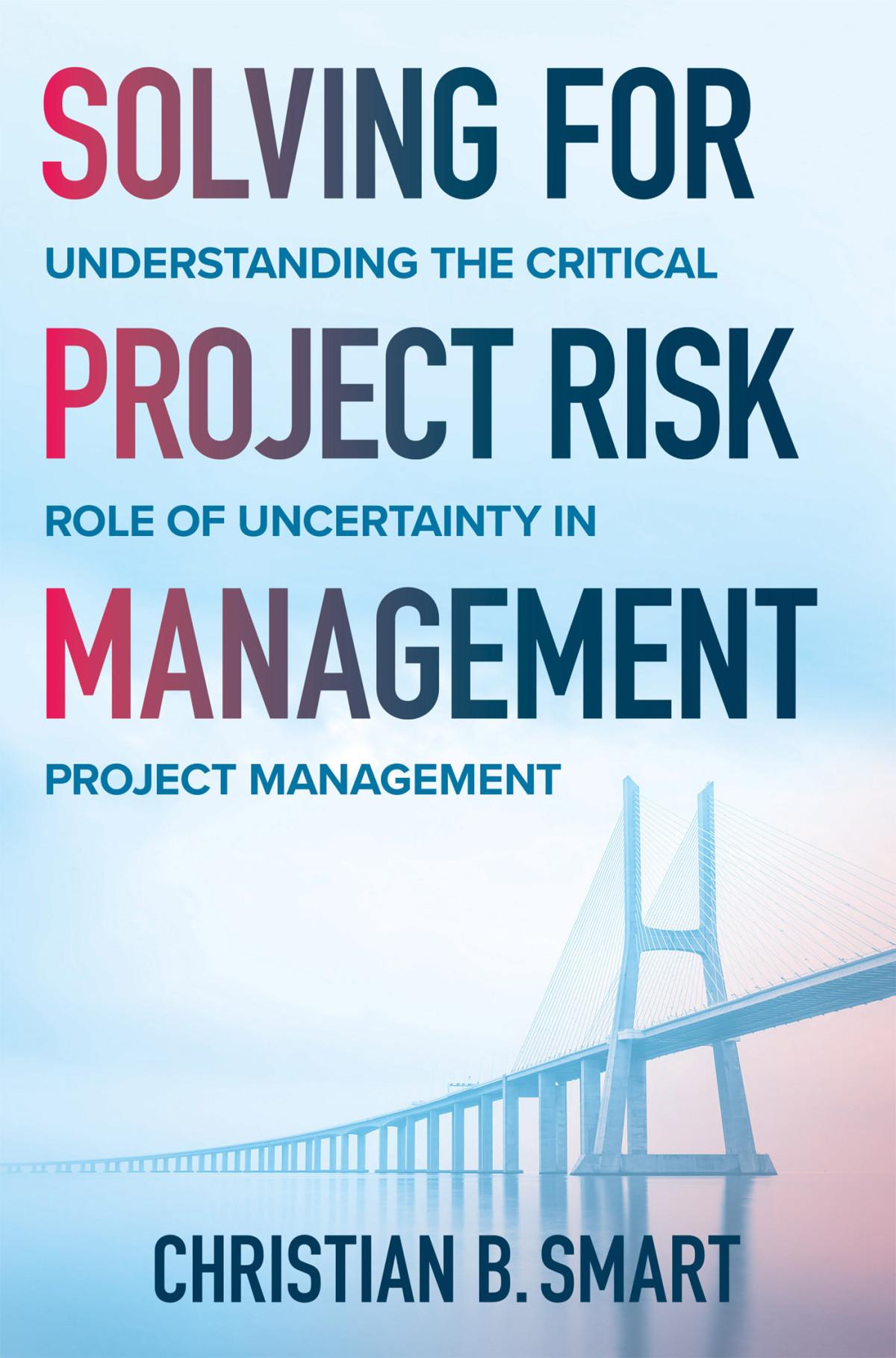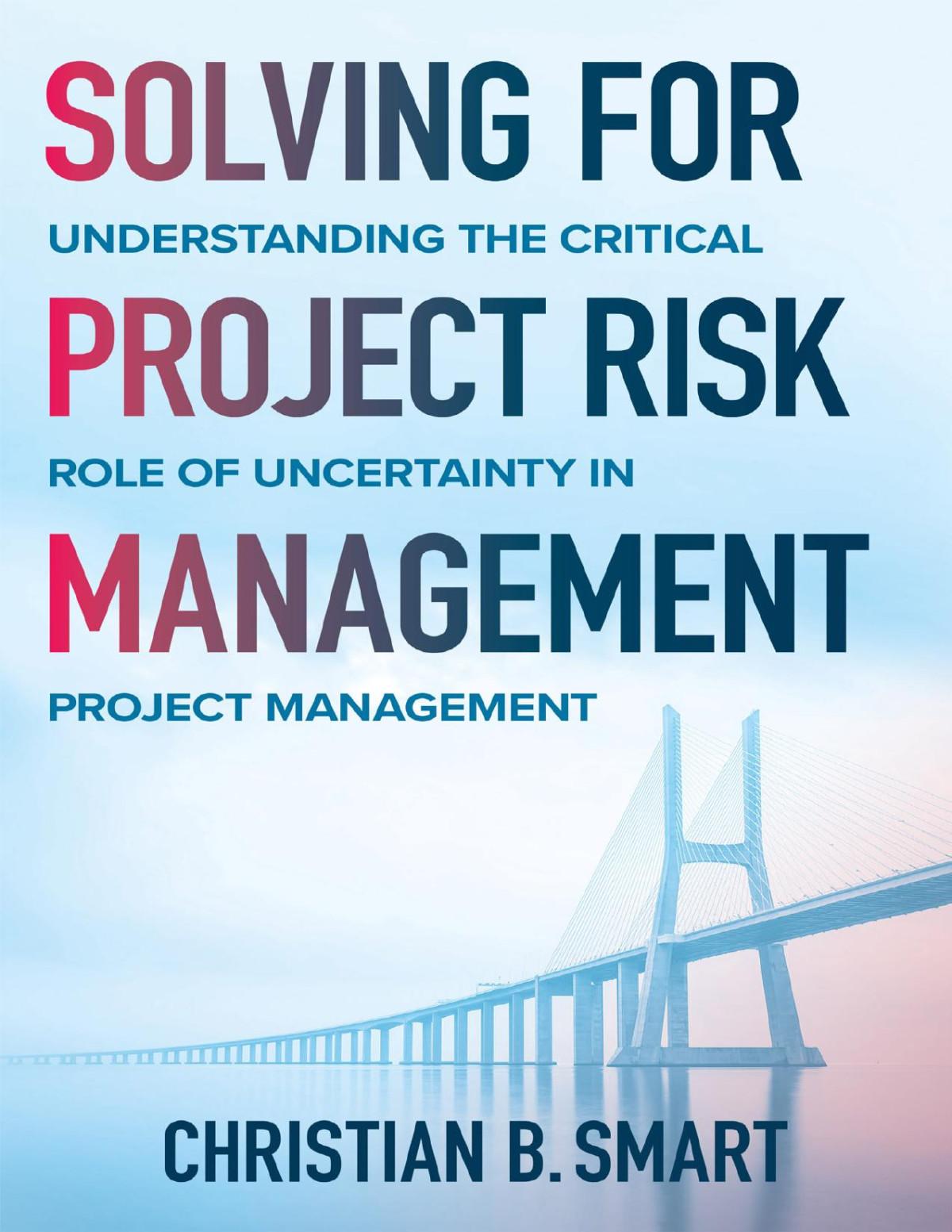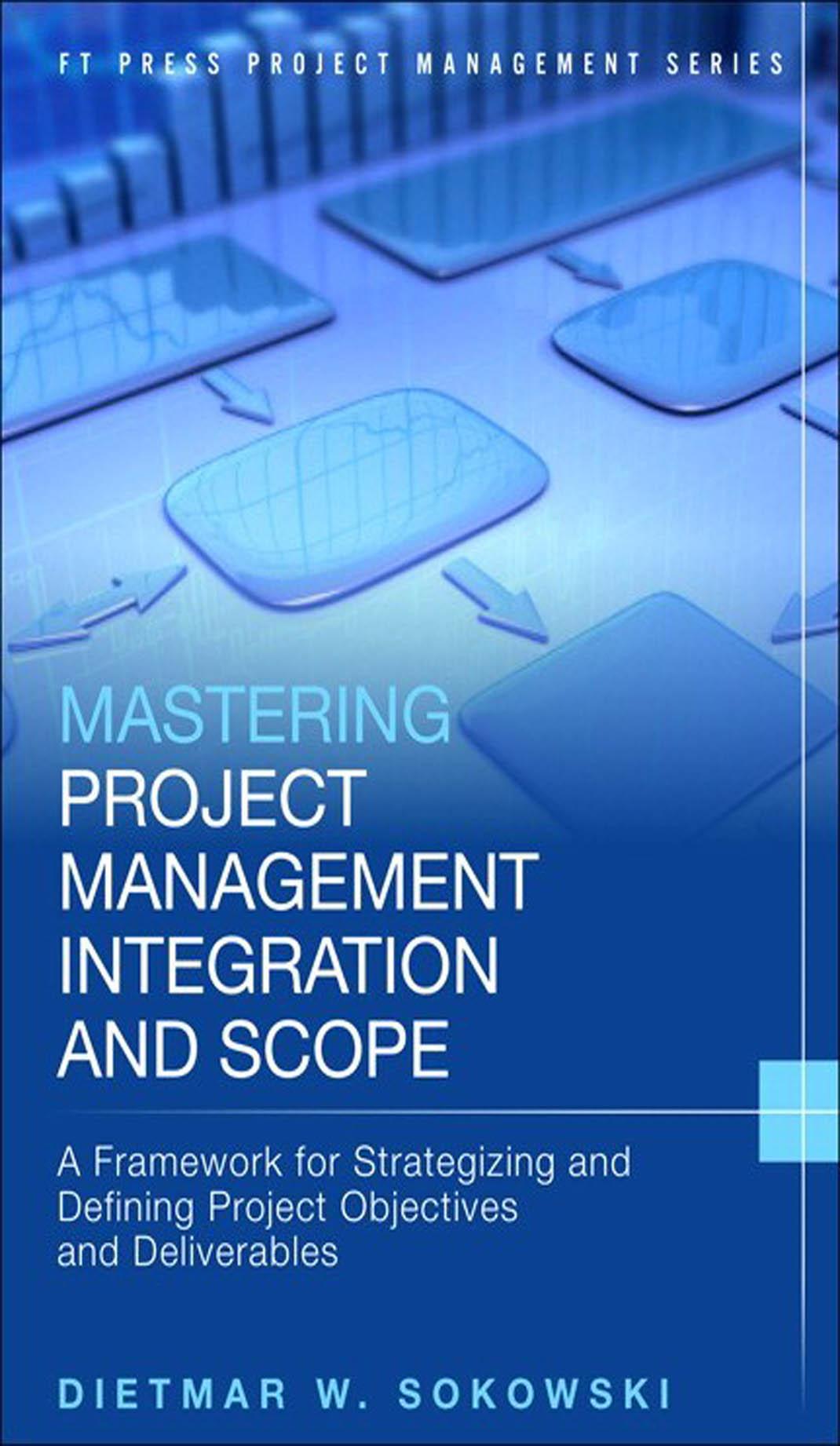Preface: The Organization and Content of This Book
This book is organized into four sections.
Section I, “The Initiating of Projects,” sets the stage. Chapter 1, “Fundamentals,” introduces the holistic viewpoint of integration and scope management, the related PMBOK® Knowledge Areas and Process Groups, the IPO concept, and some fundamental terms and concepts, including the Pyramid of Business Maxims. Chapter 2, “The Project Charter,” defines and describes the single point of reference (SPOR) Project Charter, the document that formally authorizes a project.
Section II, “The Planning, Defining, Scoping, and Structuring of Projects,” focuses on the core elements of a project. Chapter 3, “Project Management Plans and Documents,” defines and describes the project management plan, subsidiary plans, and other project documents. Chapter 4, “Project Requirements,” focuses on the project requirements, how they are solicited, formalized, documented with the stakeholders, and accepted by the stakeholders. Chapter 5, “The Scoping of Projects,” focuses on detailing scope elements within the bounds defined in the SPOR Project Charter. Chapter 6, “The Project Work Breakdown Structure (WBS),” focuses on the work breakdown structure, the unambiguous documentation of what is within the defined and accepted project scope—that is, what must be delivered by the successful project.
Section III, “The Managing and Leading of the Execution of Projects,” focuses on directing, managing, monitoring, and controlling the actual project work, the inevitable changes, and controlling and validating the project scope. Chapter 7, “The Directing and Managing of the Work Performed in Projects,” is dedicated to the directing and managing of the work performed in projects, while Chapter 8, “The Monitoring and Controlling of the Work Performed in Projects,” concentrates on the monitoring and controlling of the work performed in projects. Chapter 9, “The Integrating and Controlling of the Changes Occurring in Projects,” addresses the integrating and controlling of changes occurring in projects, and Chapter 10, “The
Controlling and Validating of the Scope of Projects,” focuses on the controlling and validating of the project scope.
Section IV, “The Closing of Projects,” addresses two highly important, but often neglected elements in the life of a project, the project closure acceptance documentation (PCAD) and on lessons learned. These elements are covered in Chapter 11, “The Closing of a Project or a Phase.”
Key Themes That Characterize This Book
Over time, a plethora of books on project management became available. Some books emphasize particular techniques or software tools, often, without deliberate intention, creating the hope in the reader to find the silver bullet. Other books elaborate on the history of project management, or the latest trend in academic project management research.
One book that stands out and has become a de facto standard in project management is the Project Management Institute’s (PMI) A Guide to the Project Management Body of Knowledge (PMBOK® Guide). At first contact with the PMBOK® Guide, the perceived dichotomy of Knowledge Areas and Process Groups has created some degree of misunderstanding and confusion among practitioners and particularly students. Without additional help, the exceptional usefulness of the PMBOK® Guide becomes evident only after extensive, and sometimes testing, experience with the PMBOK® Guide in managing projects.
Mastering Project Management Integration and Scope aims to provide such help. It introduces the holistic viewpoint of project management, which to a large extent parallels the PMBOK® Guide, but differs in that it avoids the interface issue of the Integration Knowledge Area with the Scope Knowledge Area by providing a new definition of the project scope management activity.
What This Book Is Not
Mastering Project Management Integration and Scope is not a book on the history and growth of project management methodologies or techniques. It is also not a book that elaborates on the importance of
project management in general or for an organization, nor is it a book that teaches in detail various techniques useful for the management of projects.
The book emphasizes a critical-thinking approach to integration and scope management to develop a conceptual understanding of the principles of project management with the intent of widening the domain of people who truly understand what constitutes project management.
Assumption
The readers are assumed to have a fundamental understanding of the different forms of organizational structure that can exist in commercial companies and in government agencies. The detailed knowledge conveyed in courses or textbooks on Organizational Behavior and Managerial Accounting is not required to get the maximum benefit out of Mastering Project Management Integration and Scope, but some familiarity with the topics from these courses or books will be helpful. Within the life span of a project, a project manager will be confronted with issues of cost, risk, human behavior, planning, change in midstream, and similar aspects of business life. The aim of this book is to prepare the project manager to successfully handle such challenges—not by being exposed to numerical examples, but by becoming aware of the underlying principles and factors of influence.
This Book’s Audience
This book has been written for an audience that encompasses the entire spectrum of people exposed to and working with project management: the people who teach project management, the people who want to learn about project management, and the people who practice project management.
Instructors
The topic-oriented organization of the book enables instructors to use this book as the sole textbook or in conjunction with the PMBOK® Guide or even another textbook.
Student Community
Students will benefit from the topic-oriented organization of the book as this classification makes it easier to grasp the meaning, purpose, and influence of each topic on the management of projects—just like the object-oriented paradigm greatly improved the development, quality, and maintainability of software programs.
Practitioners
For practitioners, the topic-oriented organization of the book makes it a practical and easy-to-use reference book in their daily work whenever they want to be reminded of the fundamental principles.
All Readers
Whatever the audience, I hope that the book will provide sound insight into the subject of integration and scope management and that the book succeeds in illuminating the PMBOK® Guide’s comprehensive coverage of project management knowledge areas and the processes involved in managing projects.
Finally, I hope that the book will inspire the readers to join me in stating “everything in life is a project and I love making projects successful.”
This Book’s Two Distinctive Features
(1)The chapters are consistently organized into three pedagogical blocks: the alpha [ ]-block, which takes the reader from his or her current point of understanding to the second block, the main topic of the chapter, and the omega [ ]-block, which relates the main topic to actual project reality and allows the readers to confirm and reinforce the knowledge and understanding gained from the chapter. Thus, each chapter presents a closed learning block, from beginning to end, of one main topic.
(2)The use of the seven magnificent relative pronouns, referred to as the 7-Ws ever since Joachim Georg Daries’s (1714–1791) Latin terms had been translated into German. (In English, there are six corresponding Ws and one H).
A subsequent feature of the book that provides for ease of reading for the student and the practitioner and helps the instructor in delivering a comprehensible course is the consistency in structure throughout all chapters. The repetitive nature of the structure helps to reinforce concepts, deepen understanding, and strengthen retention.
Chapter 1 contains a glossary of new terms at the beginning of the chapter. In addition to being listed in the glossary of new terms at the beginning of Chapter 1, key terms are highlighted in bold at first occurrence in the text of Chapter 1. Where considered helpful and practical, a “case in point” is provided at the end of some chapters.
As is customary, the Bibliography gives credit to the sources of original thought, description, or illustration and might serve as suggestions for further reading.
Study Techniques
Notwithstanding individual differences in human nature, the keys to successful learning are concentration, persistence, and stamina. Multitasking doesn’t work at a quality level in the human brain and, as we are sometimes painfully reminded, not even well in computers.
One successful approach to studying is to first reflect on what the chapter (section) is about; then, after each paragraph, stop and explain to yourself what the paragraph “told” you. Some people use index cards to write down that message; others, like myself, use mind mapping to extract key ideas, important terms, and the like. The key question to ask yourself is always the “What” question. What was the main concept, statement, or logic of this paragraph or this chapter? Finally, explain or teach to a (virtual) listener or to yourself the essence of the chapter.
This page intentionally left blank
Learning Objectives
Note: To support the learning process and to reinforce the retention of the chapter’s content, the learning objectives are not necessarily listed in the sequence of the chapter content.
After having read and comprehended the contents of this chapter, you should be able to:
• Sketch a visual representation of the PMBOK® Guide integration and scope areas in the holistic scope management concept.
• List and explain the principal factors that influence the managing of a project.
• List and describe the fundamental elements that make up project management and break down these elements into their constituent parts.
• Explain what a project is.
• Explain the relationships, the differences, and the similarities between the terms activities, tasks, subtasks, steps, and processes.
• Explain the principal concept behind project management.
• Explain the distinction between the PMBOK® Guide concept and the holistic concept of project management.
• Describe the principal difference between scope management according to the PMBOK® Guide and scope management according to the holistic viewpoint.
• Describe the fundamental concept of the PMBOK® Guide.
• Describe the concept of project management from a holistic viewpoint.
• Describe how and where the PMBOK® Guide concept and the holistic concept of project management are similar.
• List the PMBOK® elements.
• List the levels (bottom up) of the Pyramid of Business Maxims.
• Identify and describe the “all-present” business factors that influence project management in every organization.
• Explain the meaning and the importance of each level in the Pyramid of Business Maxims.
• Explain the IPO concept, its possible origin, its recent historical origin, and its usefulness when applied.
• Describe where the concept of Knowledge Area or activity area could possibly come from.
• Describe and explain the essence of the meaning of the terms organization and project.
• Describe and explain the essence of the meaning of the terms leadership and project management.
• Define goals and objectives and explain the difference between the two terms.
The Four Sections of This Book
Section I covers the initiating of a project with Chapter 1, “Fundamentals,” and Chapter 2, “The Project Charter.”
Section II covers the planning, defining, scoping, and structuring of projects. These topics are described in four chapters: Chapter 3, “Project Management Plans and Documents,” Chapter 4, “Project Requirements,” Chapter 5, “The Scoping of Projects,” and Chapter 6, “The Project Work Breakdown Structure (WBS).”
Section III covers the managing and leading of projects. The four chapters of this section are Chapter 7, “The Directing and Managing of the Work Performed in Projects,” Chapter 8, “The Monitoring and Controlling of the Work Performed in Projects,” Chapter 9, “The Integrating and Controlling of the Changes Occurring in Projects,”
and Chapter 10, “The Controlling and Validating of the Scope of Projects.”
Finally, Section IV covers the closing of a project with Chapter 11, “The Closing of a Project or a Phase.” With the exception of Chapter 1, there is a label on each of the chapter titles in Figure 1-5 indicating the Process Group in the PMBOK® Guide that corresponds to the chapter content. The chapter on fundamentals cannot, by its very nature, be related to a Process Group in the PMBOK® Guide. Knowing about and truly understanding the concepts that are the fundamental building blocks of a project as described in the fundamentals chapter is essential for the holistic view of project management. Project initiation in the PMBOK® Guide–Fifth Edition starts directly with the development of the Project Charter.
Glossary
Activity Area
Activity Based Costing (ABC)
Activity Task
Baselining
Core Values
Dynamic System
Goals
HIPO
The identification (by name) of WHAT is to be managed. An activity area contains one or more separately executable activity tasks (or steps).
“A procedure that measures the costs of objects, such as products, services, and customers” (International Group of Controlling).
A component (or step) of an activity area that transforms a given input into a desired output. It specifies the HOW. Tasks may contain subtasks.
The act of “freezing” the content of a document to the status at that time.
Core values are the fundamental principles and convictions that form the foundation of an organization. For a detailed description, see the section “The Pyramid of Business Maxims.”
Any change in one element of the system affects all interrelated elements and the behavior of the system at any one point in time influences its behavior at a future point in time.
A measurable target to be reached. For a detailed description, see “Pyramid of Business Maxims.”
HIPO stands for Hierarchical Input-Process-Output, a structured system analysis design aid and documentation technique developed by IBM in the 1970s.
Holistic
A viewpoint that focuses on the whole of a “something” rather than individual elements.
Integration The connecting of individual elements into a coherent whole. PMBOK® Guide specific: The performing of activities that produce output for use over the entire project or that span across several PMBOK® Knowledge Areas.
IPO
Knowledge Area
Mission
Objectives
Object-Orientation
Organization
Owner
PMBOK®
IPO stands for Input-Process-Output. See also HIPO.
PMBOK® Guide specific: The collection of processes to be performed for the project management activity identified by the name of the area.
An organization’s strategic purpose, its reason for being. For a detailed description, see “Pyramid of Business Maxims.”
A measurable target to be reached. For a detailed description, see “Pyramid of Business Maxims.”
A way of organizing knowledge conceptually.
A contractual agreement between two or more persons to achieve a stated result.
The owner of a project is the person who provides the funds for the project or the person appointed as the owner by the provider of the funds.
A collection of knowledge about project management published by the Project Management Institute (PMI).
Process “A systematic series of activities directed towards causing an end result such that one or more inputs will be acted upon to create one or more outputs” (PMBOK®).
Process Group
Project
Project Charter
Project Life
Project Management
In the context of the PMBOK® Guide: The collective term for a set of processes used for a common purpose.
Any endeavor that serves a specific purpose, objective, or goal under the constraint of time, resources, quality objectives, and defined scope. It has a definite start and a definite end point.
The document that formally authorizes a project.
The duration of a project.
A set of activities performed to move from a given state to a defined target state. Specifically: the planning, organizing, coordinating, controlling, and leading of activities and resources.
Project Manager
A person selected to manage and lead a project.
Resources People, financial means, material means, knowledge bases, time.
Scope
Scope Creep
Stakeholder
Strategy
View
Viewpoint
Vision
Work Area
Work Breakdown Structure (WBS)
Overview
The totality of the area of coverage of a project. Scope demarcates the complete and unambiguous domain of a project.
The undocumented stepwise expansion of the original baseline of the scope of a project, product, or service without agreed-upon changes to the original constraints.
A person, a group of persons, or an organizational unit affected by or influenced by a project or exerting an influence on a project. The term also includes all members of the project team.
The description of the methods of how to achieve an organization’s goals. For a detailed description, see “Pyramid of Business Maxims.”
What you see when you look from a viewpoint.
The mental position or perspective from where one is looking to obtain a view of some item or items.
An organization’s view of itself. For a detailed description, see “Pyramid of Business Maxims.”
Another name for activity area.
A deliverable-oriented grouping of project elements.
Integration and scope management of a project encompasses the activities of initiating, planning, defining, scoping, managing, leading, and closing. Organizations are complex living structures, and work within an organization is consequently difficult to perform. Efforts to be efficient in the execution of organizational work lead to the concept of projects and project management.
The word project can be seen as a collective term for the work performed in turning a given input into an output that had been determined to be of a certain value to the organization. Building on that concept, the word project management can be considered a summarizing term for the effort to manage the work performed in executing the project. The concept of Process Groups and Knowledge Areas, the foundation on which the Project Management Institute (PMI) has based the PMBOK® Guide–Fifth Edition, can be considered as
a natural consequence of human thinking and of man’s experience gained over time.
Factors that determine an organization’s modus operandi and influence its projects, its project management, and the people involved in the (project) work are the vision, the mission, the objectives, and the strategy of the organization. Factors that play a significant role in the successful planning, execution, and completion of a project are a project manager’s leadership qualities, communication skill, and the ability to “see and live” an organization’s values. Given these qualifications, a project manager must have a solid understanding of a number of fundamental terms and concepts to successfully function within the actual working-structure of an organization. These topics are addressed in the subsections of this chapter.
Project management consists of a number (or set) of activities. An activity, also referred to as activity area, in turn consists of a number (or set) of activity tasks (or steps). If beneficial, tasks may be divided into subtasks. An activity task starts when it takes a given input (or inputs) and consumes time and resources by transforming the input into a specified output. The task ends with the delivery of the output (or outputs). Since an activity consists of a set of tasks, it consequently also has a start and end point and consumes time and resources. The resource consumed by an activity is the algebraic sum of the resources consumed by its tasks. The time consumed is differentiated into elapsed time and total time. The total time consumed by the activity is the algebraic sum of the time consumed by all its tasks. The elapsed time is the difference between the start time of the first executed task and the end time of the last completed task. These cost figures are used in the cost-benefit analysis of a project using activitybased costing (ABC) or some other method of evaluation.
Integration and scope management of a project encompasses the activity tasks (or steps) of initiating, planning, defining, scoping, managing, leading, and closing. In this context, integration is understood to mean the connecting of individual elements into a coherent whole, and scope is understood as the totality of the area of coverage of a project. Organizations are complex living structures and as such act and behave as dynamic systems both in the mathematics/physics sense and in the psychological sense. As a consequence, work within an organization is difficult to perform. Human efforts to be efficient
in the execution of organizational work have led to the concept of projects and project management.
The word project can be seen as a collective term for the work performed in moving from a current state (as-is state) to a future state (to-be state) by turning a given input into an output that had been determined to be of a certain value to the organization. More formally, a project can be defined as any endeavor that serves a specific purpose, objective, or goal under the constraint of time, resources, quality objectives, and defined scope. A project has a definite start and a definite end point. Building on that concept, the word project management can be considered a summarizing term for the effort to manage the work performed in executing a project. More specifically, project management can be defined as the planning, organizing, coordinating, controlling, and leading of activities and resources to start and complete a defined project.
The Project Management Institute (PMI) has based its “Project Management Body of Knowledge” collection, the PMBOK® Guide–Fifth Edition, on the concept of Process Groups and Knowledge Areas. A Knowledge Area in the PMBOK® Guide is a term for the collection of related processes to perform a certain type of work. Three examples (out of nine) are the Risk Management, Time Management, or Scope Management Knowledge Areas. In addition, there is a tenth Knowledge Area called Integration for cross-functional processes. Although the concept of Knowledge Areas and Process Groups is in actuality straightforward, the PMBOK® Guide has gained a reputation of being difficult to understand. Maybe the use of an integration area has something to do with this. For information on the PMBOK® concept and a visual representation of the concept, see the section “The PMBOK® View of Project Integration and Scope Management” in this chapter.
Project management can also be viewed from a holistic viewpoint. The viewpoint concept taken is similar to the PMBOK® concept, yet distinct in a subtle way. The viewpoint of the integration and scope aspects of projects and of project management is a holistic one based on the recognition that the key to the management of a project, from the point of initiation to the point of closure, is to manage the (defined) scope of the project. Under the holistic viewpoint, the activity tasks (or steps) to manage the scope of a project include, by
the definition of holistic, any and all integrative project management activities steps. Although that inclusion has determined the structure of this book, the use of the widely known term Integration and Scope for this book was chosen to facilitate a direct and easy cross-reference to the PMBOK® Knowledge Areas.
Based on the holistic viewpoint, Mastering Project Management Integration and Scope is structured into four conceptual sections. The Initiating of Projects (covered in Section I), The Planning, Defining, Scoping, and Structuring of Projects (covered in Section II), The Managing and Leading of the Execution of Projects (covered in Section III), and The Closing of Projects (covered in Section IV). A visual representation of this holistic structure is shown in Figure 1-1.
The holistic view of Project Integration and Scope Management
Many sources of project management address the initiation of a project by talking about terms like project brief, Project Charter, project kick-off meeting, project launch meeting, or some similar expression. While the activities behind the terms, respectively, the activities implied by these terms, are absolutely necessary, they are not sufficient in my opinion. Just like the participants in the study of mathematics (also known as students) cannot understand (and much less prove) a mathematical theorem without knowledge of the fundamental axioms and the definitions of the terms involved in the theorem, the participants in a project (also known as stakeholders) cannot, in all likelihood, understand each other or comprehend the meaning and necessity of the various elements and activities in a project. To have a chance in doing so, they first must acquire a common
Section IV
Section I Section II
[Planning, Defining, Scoping, and Structuring] of Projects
[Managing and Leading] the Execution of Projects
Project Scope Management Activity
Figure 1-1 The holistic structure of integration and scope management
understanding of project and project management fundamentals. This is the reason for Chapter 1, “Fundamentals,” being the first chapter in the section on the initiation of projects (refer to Figure 1-5 later in the chapter).
There are tangible and intangible factors that influence an organization’s modus operandi and also influence its projects, its project management, and the people involved in the (project) work. Tangible factors are the organizational structure, supporting hardware and software systems (including technical infrastructure), the organization’s data pool, hardware tools, software tools, documentation, and financial and human resources. Intangible factors are the vision, the mission, the goals, the objectives, the strategy, and the core values of the organization. Some authors of project management literature also consider the owned (or earned) knowledge and the life and work experience of employees as an intangible factor or asset. But such a consideration quickly becomes academic with the consideration of the question if and to what extent employees are willing to bring in these assets. Unlike with college football games, “all in” is not a given in the workplace.
Additional factors that play a significant role in the successful planning, execution, and completion of a project are a project manager’s leadership qualities, communication skill, work performance capability, and the ability to “see and live” the organization’s values. Like any stakeholder, a project manager must have a solid understanding of a number of fundamental terms and concepts to successfully function within the actual working-structure of an organization. These topics are addressed in the following sections of this chapter.
The Holistic Viewpoint of Project Integration and Scope Management
Under the holistic viewpoint, the activity to manage the scope of a project includes, by the definition of holistic, any and all integrative project management steps. The scope of a project, once defined and agreed upon by all stakeholders, completely and exhaustively defines the domain of a project. Project management activities necessary from the viewpoint of communication, cost, human resources,
